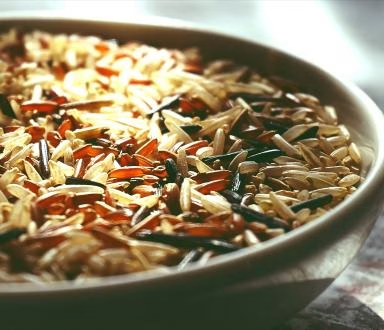Most families have likely encountered this: opening a bag of rice and washing it, and finding black rice weevils crawling among the rice. Perhaps you’re used to it, or perhaps it’s a real annoyance. You’ve probably wondered why there are weevils in the rice? Can you cook and eat such rice? There are ways to reduce the proliferation of weevils during rice storage.
The rice weevil, a common rice weevil, is a headache for everyone from farmers to ordinary households.
Rice weevils are often used to refer to pests that invade and damage rice grains, such as brown rice and wheat. One common rice pest is the rice weevil. They are brown-black in color and range in size from 2.5 to 3.5 mm. They have a long, elephant-like mouth that gnaws at the rice grains, creating holes inside them. The adult weevils then lay eggs inside, causing the rice grains to become defective or spoil.
Why do rice weevils appear?
Factors such as milling, storage conditions in the grain storage, and temperature and humidity may all be contributing factors.
If rice weevils are found in rice bags, it’s possible they were present before harvest. If the rice husks are cracked before harvest, weevils may take advantage of this opportunity to enter, though this is rare. Currently, rice is mostly removed after milling, when the hard outer husk is removed. Weevils can bite through the rice grains and lay eggs inside, sealing the holes with secretions. Therefore, rice weevils may not be completely removed during rice screening.
If there are potentially infested rice grains with eggs, once they are placed in rice bags and the temperature and humidity are suitable for reproduction and hatching, weevils will begin to reproduce and grow.
If rice weevils are found in rice, can it still be cooked and eaten?
Can rice with rice weevils still be eaten? Boiled rice is cooked at high temperatures. Once the weevils are removed, rice can still be eaten after cooking. If you encounter rice weevils, remove them and rinse the rice two to four times as you would with rice. Undetected weevils or damaged rice kernels will float out, allowing you to remove them a second or third time. Finally, cook the rice and it’s ready for consumption.
How should rice be stored?
Storing rice after purchase is crucial, as temperature and humidity can affect the reproduction of rice weevils. When the ambient temperature drops below 13°C, weevils become almost inactive. Avoiding the rice kernels from being exposed to temperatures and humidity levels that are conducive to weevil reproduction is crucial.
The recommended practice of “sealing and refrigerating” rice is also a countermeasure against weevils, preventing the growth of potential weevils.
It also helps prevent other problems such as mold and flavor loss.
While consumers have no control over the rice milling and bagging processes, they can make adjustments during purchase and storage. Pay close attention to the seal of the rice bag, choose vacuum-packed rice bags that are less susceptible to weevils, and use small bags to avoid long-term storage.
Seal and refrigerate rice in airtight containers after portioning it. This helps preserve the freshness of the rice grains and controls the temperature, preventing the growth of rice weevils. If your rice is frequently infested with weevils, consider whether the problem lies with your storage method or with mixing different types of rice. Make adjustments immediately.


Leave a Reply